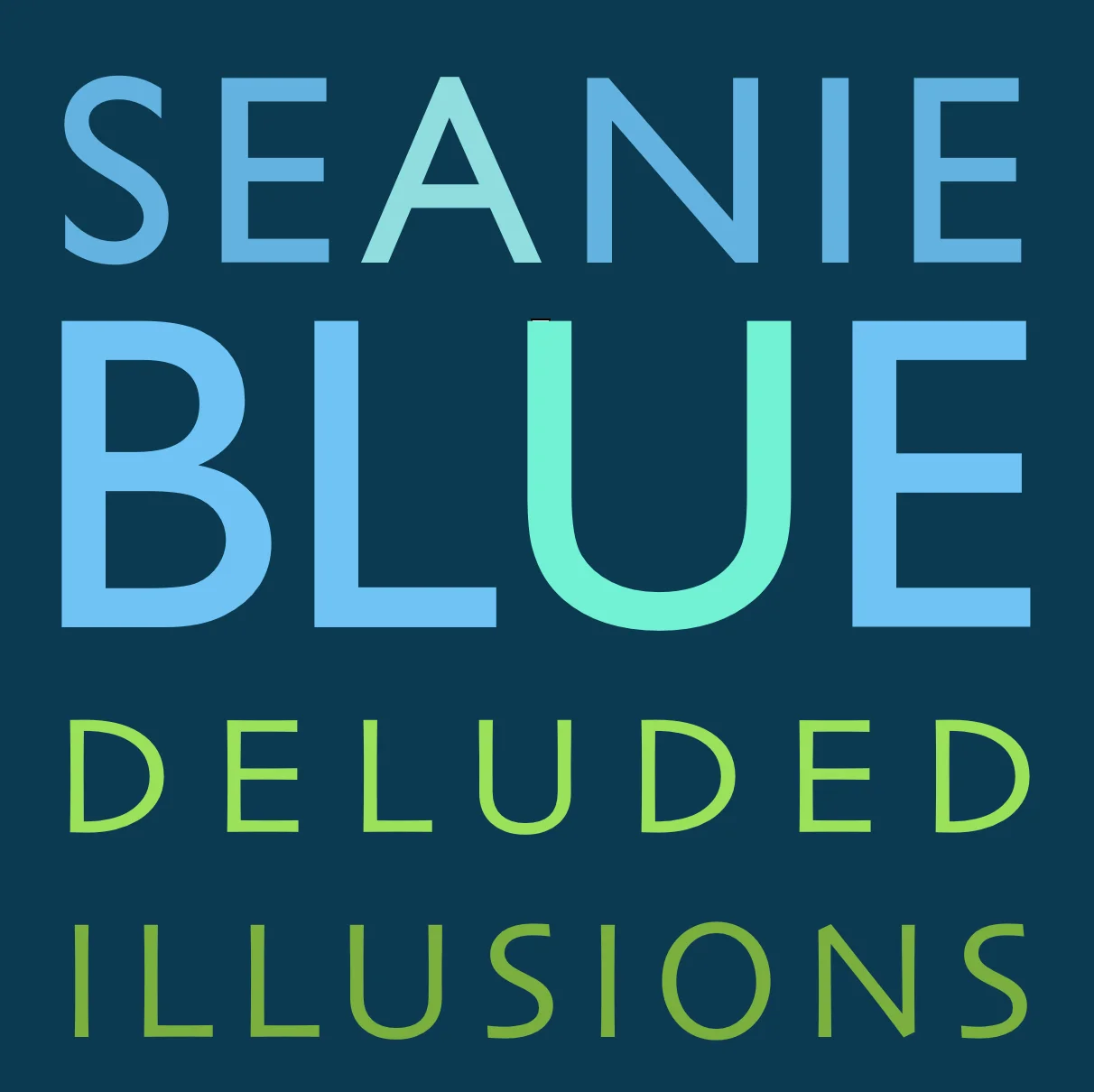September 2012
"Namaste Papi" released by Moonlight Project
The first polished, completed version of a song from the Moonlight Project is out in public. Not yet on iTunes, it can be heard on Soundcloud or by clicking on the audio bar directly below.
"Namaste Papi" behind the scenes (short) from seanie blue on Vimeo.
The 10-minute version will be shown on the big screen at Shoemaker this Saturday night. We'll also try to do a semi-live version, with some surprises sitting in. Here are the original liner notes to this song:
The lover breaks out of an affair to experiment elsewhere, and the lover's partner is more surprised than hurt or betrayed. There is a new passion between the lovers because of this dance outside the boundaries of a relationship. The lovers then see each other in a new light.
This song, Namaste Papi, is part of the Moonlight Project, created by Peter Fox and Seanie Blue, and produced by Fox, Blue and Sandra Bishop and Steve McCormick. It is one of 13 base songs, each of which have up to a dozen variations. The Project will eventually have more than 100 songs in its collection. Written and produced in Venice Beach and Washington DC, the project explores how memory of a love affair can be much more fulfilling than the actual relationship. Love is described here as a star, subject to the physical laws of celestial mechanics: the bigger the star, the more quickly it burns out. The Moon reflects vanished starlight, or sunlight, and the nighttime sky gazer sees in the Moon the memories of a burned-out love. The 13 songs explore the process of a passionate love affair as it becomes a torrid memory.
The lead vocal in this version is performed by Marjani Clark. The lead vocal in Spanish is by Sandra Bishop. Chorus vocals include Jonelle Vette, Bishop, Nika Smith-Jones, Sophie Holt and Neeta Ragoowansi. The idea was to meld a Himalayan influence to an Iberian rhythm, mimicking the travel of Rajasthani chants from NW India through the Middle East and Eastern Europe to the south of Spain, where those chants and stories emerged as flamenco in Andalucia in the 15th Century. For this, I wanted to experiment with a poor band's sound from the Caribbean. The horns should be Cuban, modeled at first on the horn sound of the band Las Orishas, but eventually stripped down to a single player: David Ralicke, who is on trumpet for Dengue Fever. But the trumpet is a military and aristocratic instrument, relative to other horns, so we asked David to play the trombone instead, hoping to create a more informal and "impoverished" Caribbean sound. I'd seen this to great effect with bands that play Punta Rock style in the oddly distinct community of Punta Gorda, in Guatemala. Punta Rock was best exemplified by the Punta Rebels, about whom I made a documentary in 2000 with Helmuth Humphrey. The lone horn meant that the band was trying for a bigger sound, but simply couldn't afford to carry the additional players to have the normal threesome on horns. Ralicke immediately got it, and insisted on giving us a lonely trombone even though the trumpet is his pro instrument.
But as we added muscle to the tune, the opportunity came up to record Chris Watling of the Grandsons of the Pioneers. He showed up with a tenor saxophone and a baritone saxophone. I remembered a conversation I'd had in 1993 with Steve Berlin, whose sax is a signature of his band's unique sound: Los Lobos is not the Caribbean, but their East L.A. timbre is arguably the most glamorous of all lower-class Latin music, even with the recent explosion of interest in truly poor musicians in Havana. "The tenor just sounds more refined," said Berlin, "So when I want to get people moving and they're broke or oppressed, the songs they seem to respond to have a fatter and more resonant horn, and that's when you should use the baritone." These were not his exact words, of course, but paraphrase what he was explaining to me then as he prepared to play for tens of thousands of yuppies at the Clinton inauguration on the Mall. The audience is susceptible to socioeconomic conditions when listening to music: UB40, another band dependent on its sax sound, got its name by playing concerts to which people could only attend if they showed their Unemployment Benefits Form 40, hence the name UB40. So when Watling showed up last Friday with both tenor and baritone saxophones, it was easy for me to explain why we wanted the barry: the tenor never was taken out of its case. Watling waved me off and went to work, understanding that I wanted more lament in the song than pronouncement, and he delivered beautifully.
So this song has two horns, Ralicke on the trombone and Watling on the baritone sax. They punctuate the song's six different melodies. I haven't talked it over with Peter, but I think of all the songs we've created or produced, six melodies is the most in any one song. And of those six melodies, at least three could be described as "hooks," music to any musician's ears! But where did they come from? How were they elaborated and protected? And most importantly, how did the melodies and the rhythms join to give this song its timbre?
The "mindprint" that Namaste Papi delivers to its listeners is the result of an idea evolving from a collective chant into a pop tune. I maintain that the mindprint is the most important feature of a song when the audience is taken into consideration. Successful musicians seem able to read the moods of their audiences; equally good musicians who are not successful do not have this ability, or ignore it, or are (usually) unaware that an audience even has a mood. The mindprint is what the audience takes away from hearing a song: it is part physical echo in the ear, partly instant nostalgia depending on personal factors such as emotional distress or euphoria, and partly the ease of repeating a melody that is couched in a distinct rhythm. The mindprint is slightly different from timbre, because the latter refers to a band's continuous sound. The Rolling Stones in concert today emit a certain timbre that is instantly recognizable to anyone familiar with their repertoire. The mindprint of a song such as "Sympathy for the Devil" is very different from the mindprint for "Angie," for instance. The weakness in my collaboration with Peter is our lack of a constant timbre. This lack has kept us from continuous collaboration musically, and also prevented us from settling on a "finish" to our songs. Even today, we are stretching in various directions, and moving away from a solid timbre. We do not have that instant aural musical stamp that you can hear from acts such as Cocorosi or Electric Guest or Fitz and the Tantrums. Do we move towards the sound of a band like Of Men and Monsters, my pop preference, or towards a sound like Mumford and Sons, which might better suit Peter? We are agreed that the fascinating metamorphosis of Zach Condon and Beirut in the song "The Rip Tide" might suit both of us, but could we really take that kind of musical risk as unknown collaborators? So we are a bit adrift in terms of an overall sound, and yet uncannily sure about how to construct and present a single song according to the song's needs and the audience's desire to listen a certain way. Namaste Papi is a great example of this dichotomy.
We had a marvelous talent fall into our lap. Nicolas Smith-Jones was playing violin in Abbot Kinney when Peter and I were out for a walk. I pestered her about playing with us for three months before she showed up with three cans of mace and reluctantly sang our songs. She's a teenager; the crowings of old men were a waste of her time, but she loved Sandra and she adored the fact that we had huge ambitions musically but seemed to have no prospects commercially. She was born in the Himalayas. Sandra is a flamenco dancer. We begged Nika to watch the movie "Latcho Drom," which recounts the evolution of a single musical form from the deserts of Rajasthan to the craggy cliffs of Ronda in Andalucia. A phrase popped into my head: Namaste, that over-used Himalayan greeting, and Papi, the diminutive for an authority figure in the Latin Caribbean or the endearment of a father or lover. I croaked out Namaste Papi in a musical phrase which got instantly corrected by the talent around us in Venice, and Nika provided the violin and vocal to a bossa nova swing that might have evolved into salsa if Peter hadn't applied some brakes. Another odd hook, "Oh naive young girl . . ." was rescued from a song we'd written 15 years ago, and served as a counterpoint to the song's schmaltzy beginnings: Nika is perpetually sweet, and I have a much more sour agenda, so this line transformed the song from a love ditty to a threat against letting one's emotions fool oneself. The song's content then turned intellectual, and certain lines and ideas came easily once the flow of music began. Sandra was a critical contributor to the Spanish section of the song, which puts it into several categories we'd never imagined when the song was born. The song was written in a day, and improved over the course of a week. Myself, Peter, Nika and Sandra were the authors of its framing and melodic structures, as well as its storyline, which was dramatically improved last week, but the timbre and textures of the song are really the result of the song's own interests. It's always dangerous to claim that songs have their own ideas about anything, since science will never prove this, but I firmly believe that every song has its own destiny: a song's celebration of self is often stifled by the musicians who attempt its translation or performance. I've met many songs suffocated by a musician's ideas rather than stuffed with the song's own possibilities. How many times do we hear about songs that land fully formed in a musician's head, out of nowhere? These are good songs when they come in like this, unbothered by a musician's efforts to burnish or amplify. McCartney sang "Yesterday" in a dream, woke up, played it for Lennon and admitted that he thought he'd copped it from somewhere else because he was so sure he'd heard the song before, many times, it was that familiar to him; but it didn't matter, Lennon declared it a piece of shit, and "Yesterday" was ignored for years until George Martin listened once and predicted a massive hit. Hated and loved, "Yesterday" is one of the most familiar songs in our society, but it never got a bit of help from McCartney and nothing but a slap in the face from Lennon. But, back to our own texture and timbre problems . . .
Michael Jerome Moore, the fabulous drummer for Velvet Underground's John Cale AND the fab drummer of Better Than Ezra AND the battery machine of legendary Richard Thompson, came in to record several songs, met Nika and Sandra, loved what he caught of the vibe in the recording studios at Peter's and Steve McCormick's, and quickly explained how he would drum for Namaste Papi when he heard the rough mixes of the song. No drums. A Cajon and percussion only. Fine with me, since this would meet with the faux impoverishment of the song's roots. I carefully avoided the word "Cuba" except to drop Las Orishas as a sort of spiritual cousin to our efforts, and Michael was completely on board. It was during his transformation from enormous drum kit monster to rhythm master on the cajon, a large single drum that is best described as a leather box, while wearing jangly bells on his feet and arms, that the song found its own skin, or sound. He advised us to bring in Joe Karnes on the electric bass, and the song's rhythm was born. Karnes was on the verge of stardom with Fitz and the Tantrums, but had made a reputation as the bassist that could do anything. He was all over TV shows in bands put together for a showcase, or he toured with bands that needed a super talent, and he was among the first of the session cats hauled into studios across L.A., but he had never locked into a single enormous commercial act, and didn't appear to have that ambition. Fitz and the Tantrums would turn his life upside down. But he could come in with Michael Jerome and provide a live rhythm section as Peter ran through the structures of the song. By the time Karnes and Moore showed up to record, Peter and I had had several discussions how we assembled songs for the Moonlight Project. We were becoming alarmed at how smooth and "produced" the songs might become as we added dozens of instruments and players. Steve McCormick, who provides electric guitar on this version of Namaste Papi, had done the brunt of the recording of the Moonlight Project at his Mar Vista studio, and he repeatedly warned me about over-production. Our songs regularly had 50 tracks, and though we'd managed to keep the instruments relatively clear, there were few live combinations in our recording process. We rarely had as many as two or three musicians playing at one time. Namaste Papi, perhaps more than any of our other songs, needed some sort of live interactivity: percussion and bass would turn out to be what the song demanded, and to have Moore and Karnes there to provide it was a stroke of fortune. Elsewhere, I will elaborate more fully on my relationship with Jerome: I traveled to the wilds of Pennsylvania and to the House of Blues on Mardi Gras in New Orleans to record him playing with Better Than Ezra, followed him to Brussels and Amsterdam to document his touring with Richard Thompson, and then to Portugal as he toured with John Cale, all because of his enthusiasm for the thought-out procedures we followed in creating and then casting our songs. For Jerome, this approach was potentially much more useful than the traditional song-writing within a band: "You guys can live by your own rules, and there's no market forces demanding that you do anything or follow up anything you did before, so everything seems to be a process of invention, I mean, to the minute, to the second, and that's the way songs sound fresh and memorable." Again, he is paraphrased here. His enthusiasm was electric. No doubt he will be both shocked and satisfied when he hears this version of the song, so much fatter than he remembers.
Namaste Papi is not finished. There are its variations to pursue, and minor corrections to undertake here, in this version. A cellist is already at work learning her lines for a stripped-sown version that will feature more strings and less keys and horn. The powerhouse flamenco guitarist Michael Perez has to be brought in on that version. So we will be distracted by other chores related to this song and its cousins in the Moonlight Project. But at least this version begins to travel. This is an informal work in progress, and we plan to release the song on August 31, with an enormous party at the crumbling Gatsby Mansions to celebrate, happening on a blue moon: August has two full moons, the first on Thursday, August 2, and then the second on August 31. Hopefully we can provide a spectacle that could be referred to as happening "once in a blue moon." More to come, very soon! Your reactions are critically important to us, so please please feel free to give them.
Seanie Blue
July 26
Friendship Heights























